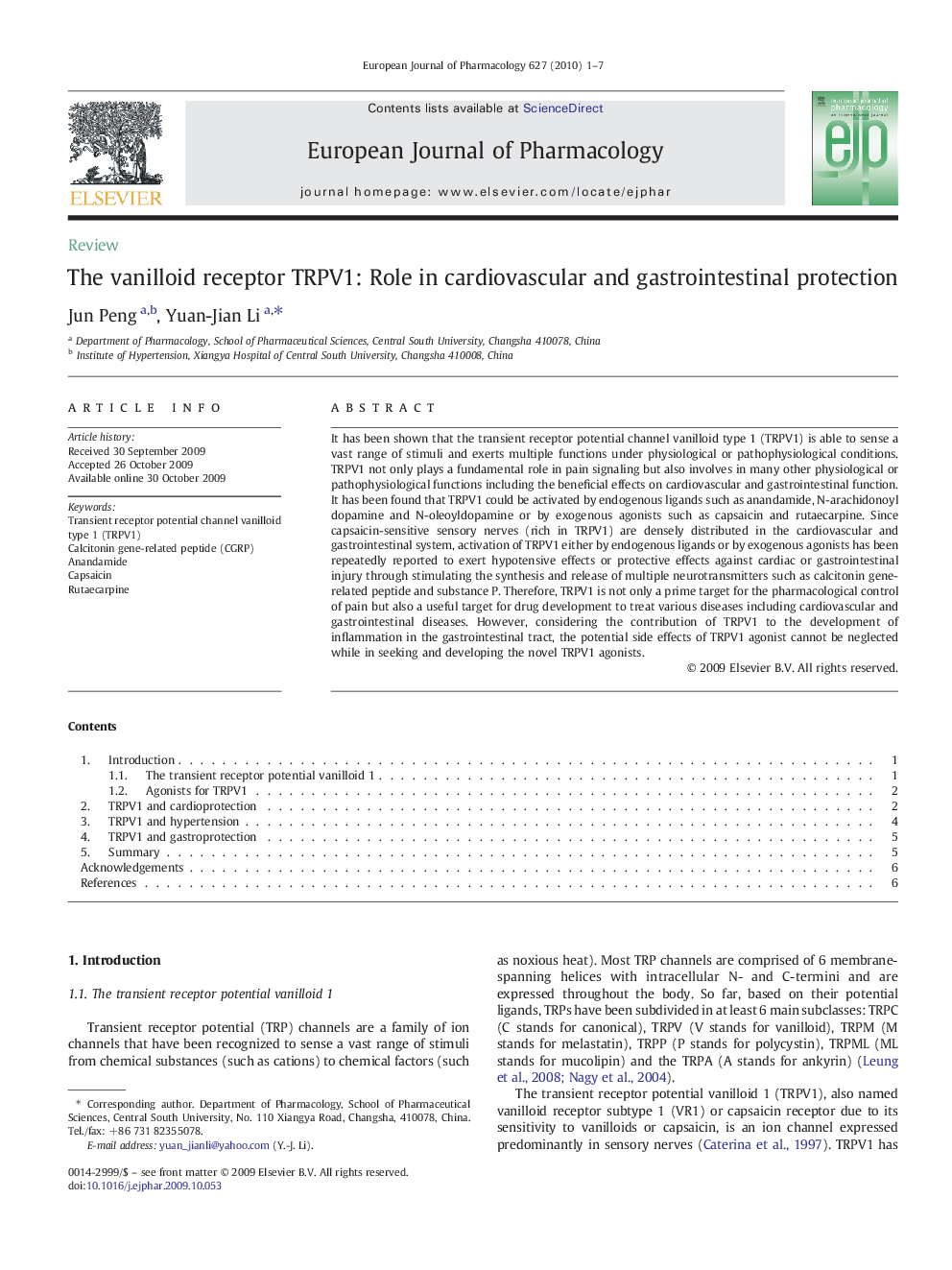| Article ID | Journal | Published Year | Pages | File Type |
|---|---|---|---|---|
| 2533738 | European Journal of Pharmacology | 2010 | 7 Pages |
It has been shown that the transient receptor potential channel vanilloid type 1 (TRPV1) is able to sense a vast range of stimuli and exerts multiple functions under physiological or pathophysiological conditions. TRPV1 not only plays a fundamental role in pain signaling but also involves in many other physiological or pathophysiological functions including the beneficial effects on cardiovascular and gastrointestinal function. It has been found that TRPV1 could be activated by endogenous ligands such as anandamide, N-arachidonoyl dopamine and N-oleoyldopamine or by exogenous agonists such as capsaicin and rutaecarpine. Since capsaicin-sensitive sensory nerves (rich in TRPV1) are densely distributed in the cardiovascular and gastrointestinal system, activation of TRPV1 either by endogenous ligands or by exogenous agonists has been repeatedly reported to exert hypotensive effects or protective effects against cardiac or gastrointestinal injury through stimulating the synthesis and release of multiple neurotransmitters such as calcitonin gene-related peptide and substance P. Therefore, TRPV1 is not only a prime target for the pharmacological control of pain but also a useful target for drug development to treat various diseases including cardiovascular and gastrointestinal diseases. However, considering the contribution of TRPV1 to the development of inflammation in the gastrointestinal tract, the potential side effects of TRPV1 agonist cannot be neglected while in seeking and developing the novel TRPV1 agonists.
